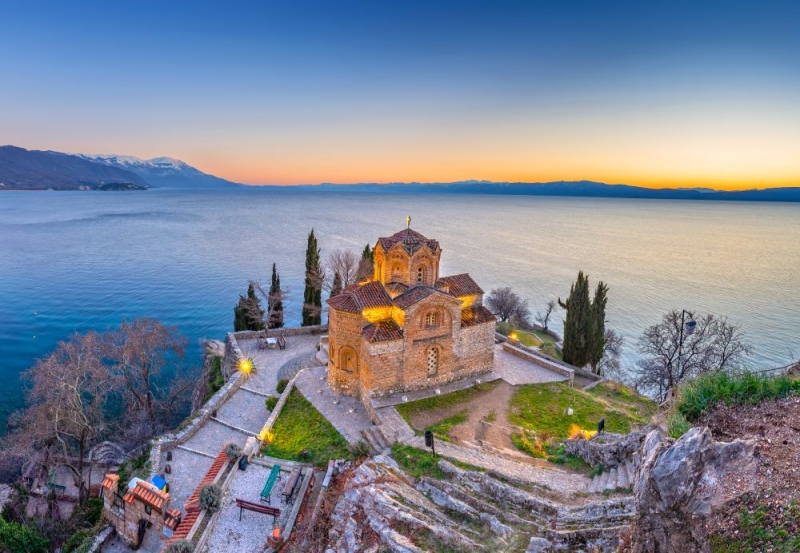
About interesting places in North Macedonia, prices and important points for tourists.
In November 2020, my husband and I traveled to Albania. And we decided not to stop at just one Balkan country, so we planned our trip to the neighboring republic – North Macedonia. Due to the fact that Macedonia was under the rule of the most developed states and empires in different centuries, it has preserved a huge number of historical monuments of all eras and styles. In addition to architectural structures, there are many natural attractions where you can take a break from the hustle and bustle of the city.
How to get there
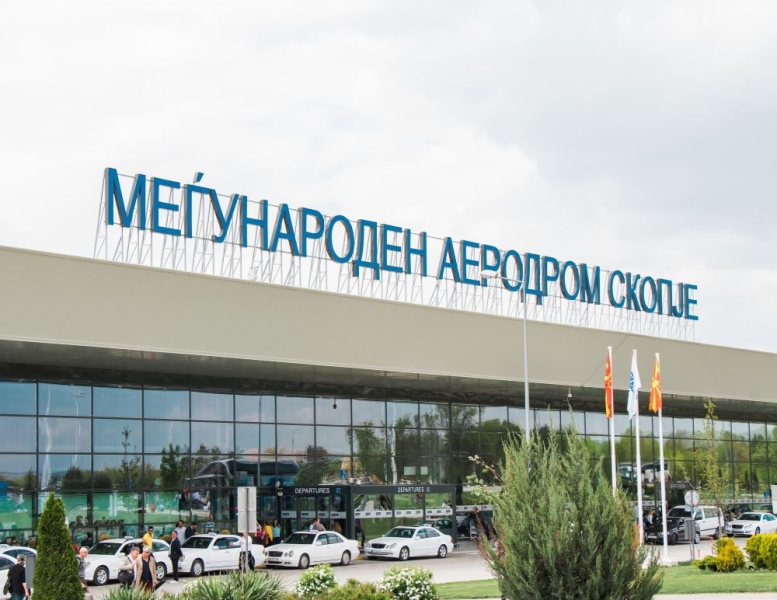
Photo: Kristijan Dimoski/shutterstock.com
There are two airports in North Macedonia. The first, Skopje International Airport, is located near the capital Skopje, the second, “St. Paul the Apostle”, is in the city of Ohrid. The cost of an air ticket from Moscow to Skopje airport will be about 25,000 rubles* in both directions.
A visa is not required for Russians provided they stay in the country for no more than 90 days. A coronavirus test and quarantine upon arrival in North Macedonia will also not be needed.
Where to stay
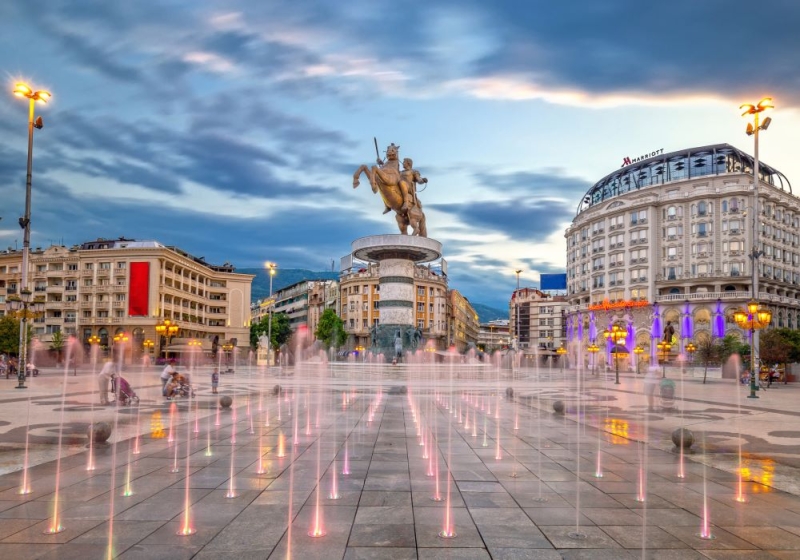
Photo: stoimilov/shutterstock.com
In Skopje you can find accommodation for almost any budget. We offer the following options:
Hostel Mickitos – from 600 rubles* per night per person;
Hotel Centar – from 3700 rubles* per night per person;
Ibis Skopje City Center – from 3500 rubles* per night per person;
Skopje Marriott Hotel – from 7300 rubles* per night per person.
Skopje – a city of contrasts
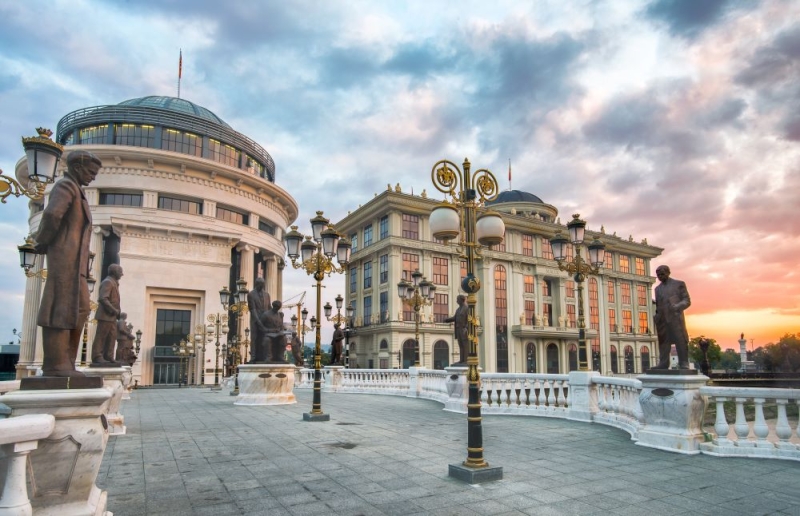
The history of one of the oldest cities in Europe goes back more than 2000 years. At different times it belonged to the Roman, Byzantine and Ottoman empires – once centers of civilization and prosperity.
The city is located in a valley between the mountains and because of this it suffered many earthquakes, which more than once destroyed it almost completely. The last one happened in 1963. Many historical monuments were wiped off the face of the earth, so the authorities developed the Skopje 2014 project, within the framework of which architects built modern buildings and installed dozens of new monuments.
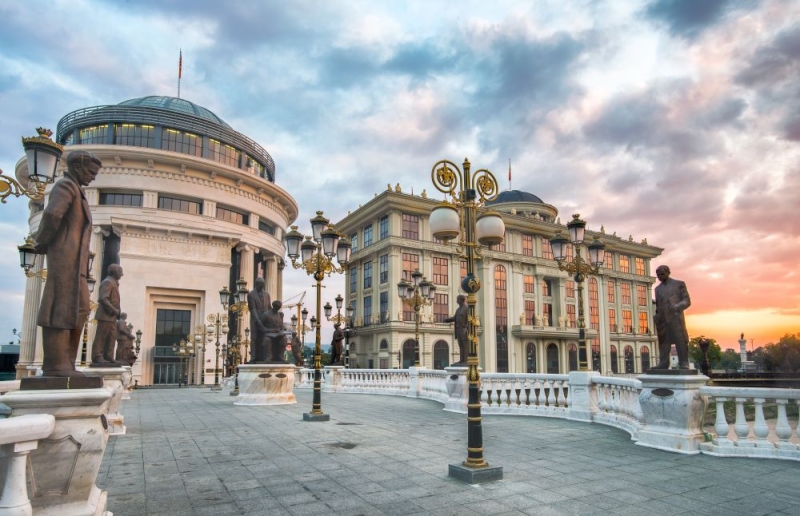
Our walk began at The Arc de Triomphe of Porta Macedonia, behind which is the pedestrian part of 11 October Street. Having walked along it, we found ourselves in the central point of the city – at Macedonia Square, built for the Independence Day of the republic. There is the “Warrior on Horseback” fountain, which is especially impressive in the evening when the lights are on. In addition, here you can see monuments to the Byzantine emperor Justinian I, who restored the first Roman fortress after the earthquake, Tsar Samuel, the writer George Pulevsky and other famous Macedonians.
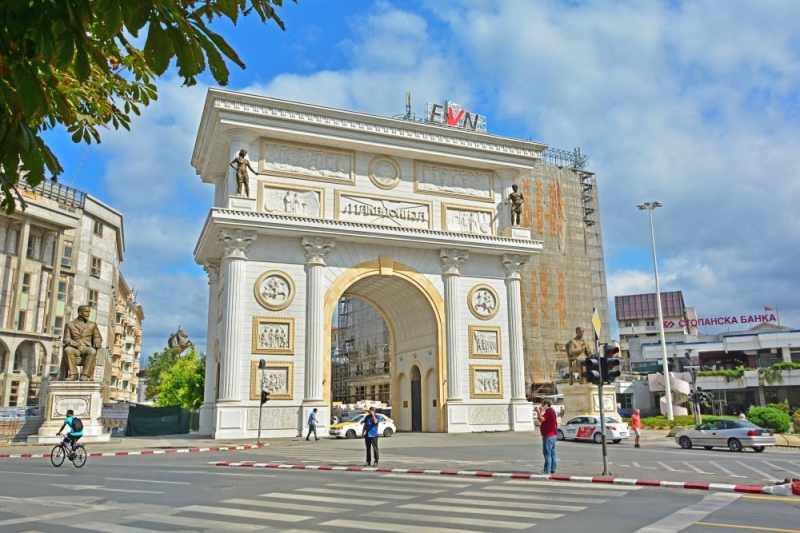
Photo: Martyn Jandula/shutterstock.com
We walked along the Stone Bridgeacross the Vardar River, which connects the new areas and the Old City. In ancient times it was used for public executions. It is surprising that the bridge was not destroyed by war or earthquakes. Immediately behind it there is a beautiful symbolic fountain dedicated to the mother of Alexander the Great. The composition consists of four sculptures of a woman and a child of different ages. Nearby are monuments to the Father of Macedon, Philip II, as well as Cyril and Methodius. On the square stands The Church of St. Demetrius, famous for the miracle that occurred in 2012: before the eyes of believers, ancient frescoes began to be cleared of dust on their own.
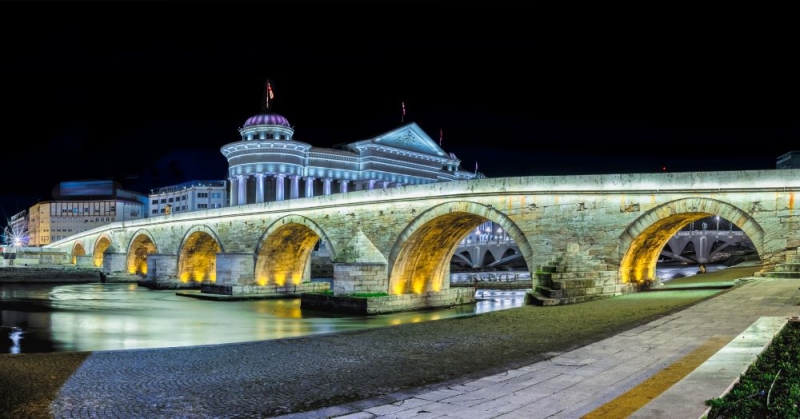
Across the street is Daut Pasha’s Hammam– a bathhouse built by the Ottoman Turks, but never opened: according to legend, because of the death of the ruler’s daughter in it. Now there is an art gallery with works by local authors. Not far from the hammam stands the Calais fortress, originally built by the Romans and then rebuilt by the Vikings in Scandinavian style. You’ll want to stay longer here—its walls offer stunning views of the city.
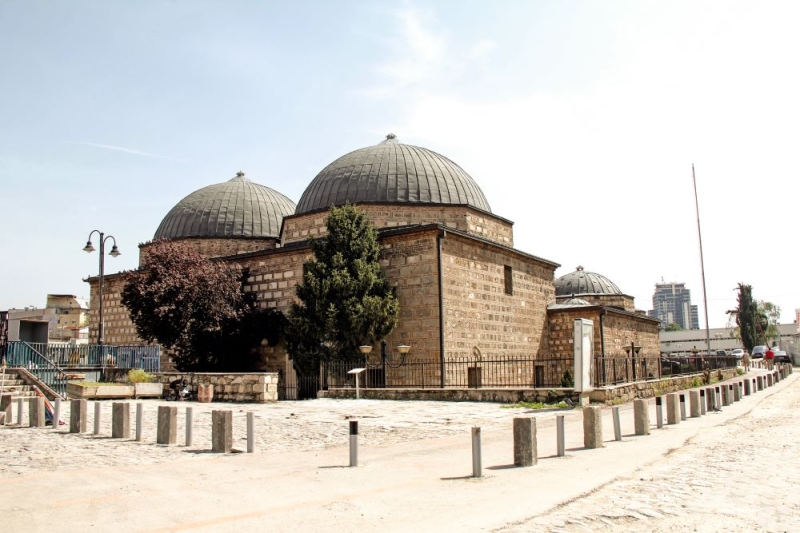
Photo: bumihills/shutterstock.com
Next we went to Old Bazaarand along the way we met another interesting Orthodox Church of the Holy Savior. It is decorated with magnificent carvings with an engraved iconostasis installed in the 17th century. Our acquaintance with the old city ended at the oldest tower in Macedonia, Saat-Kula – from it, during the Ottomans, the beginning of daily prayers was announced.

After relaxing in the colorful cafe Kaj Seradot we returned to the new part of the capital. There we were interested in the Memorial House-Museum of Mother Teresa, who was born and lived in North Macedonia until she was 18 years old. The house-museum displays photographs of the saint with famous people, her letters and personal belongings. Nearby is a 14-meter high feudal tower, built at the beginning of the 18th century for defensive purposes. The Kollektiv bar is also located here, which will appeal to lovers of craft beer.
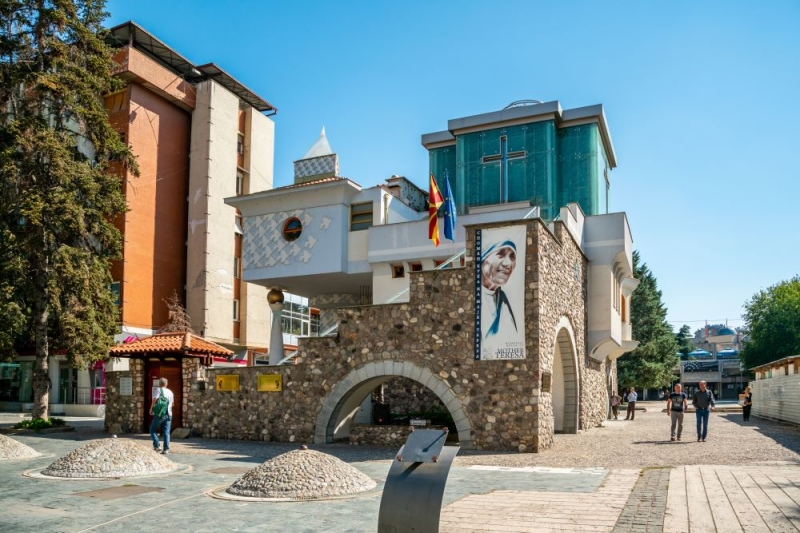
Photo: Per-Boge/wikimedia.org
Lake City Ohrid
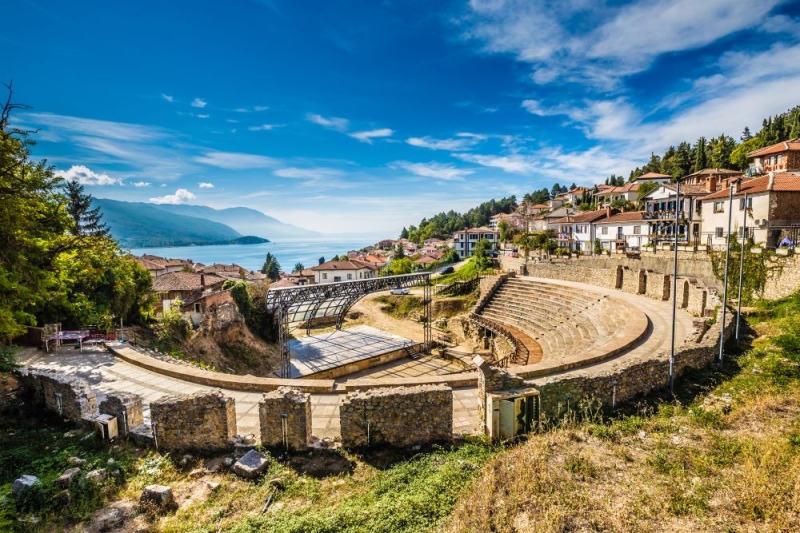
We decided to devote the next day to Ohrid, which is called the most beautiful city in North Macedonia. There are four ways to get from Skopje to Ohrid: by bus, by train (with a transfer to a bus), by taxi or rented car. We chose to rent a car. The cost of renting a car in Skopje on OneTwoTrip starts from 4500 rubles* per day.
Ohrid is located near the ancient lake of the same name with clear water – the largest and deepest in the Balkans. In terms of picturesqueness, it is often compared to the Italian Como. There are many beaches on the lake, the most popular of which are Cadmo and Cuba Libre. The authorities strictly monitor the absence of sewage and any pollution, so the shore is clean and comfortable.
The city has excellent navigation; you can navigate using numerous signs and signs. The whole of Ohrid consists of white houses with red tiles, which makes even a simple walk through the streets cozy and romantic. We started our journey at the Upper Gate of the fortress of King Samuel. Until the beginning of the 20th century, they were closed at night. From the gate we went down to the Greek amphitheater, which in ancient times was used for gladiator fights and executions, and now concerts and festivals are held there.
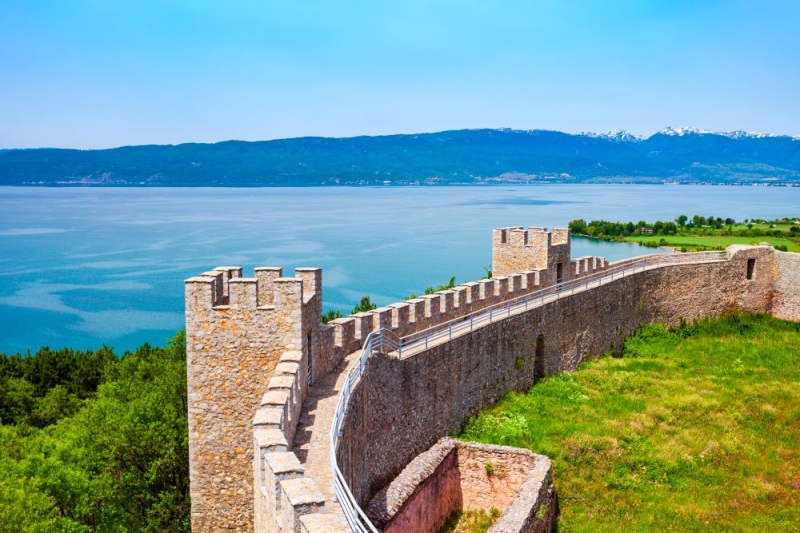
Next it’s worth going up to the fortress of King Samuel, built in the 10th century. Its walls offer beautiful views of the city and lake. To go inside, you need to pay 60 Macedonian denars.
Residents of Macedonia say that there are as many churches in Ohrid as there are days in the year – 365. We did not check the authenticity of this statement, but we have identified several places that deserve attention. Panteleimon Monastery, which houses ancient frescoes and relics of St. Clement of Ohrid. It is located in the Plaoshnik area, where archaeological excavations are being carried out.
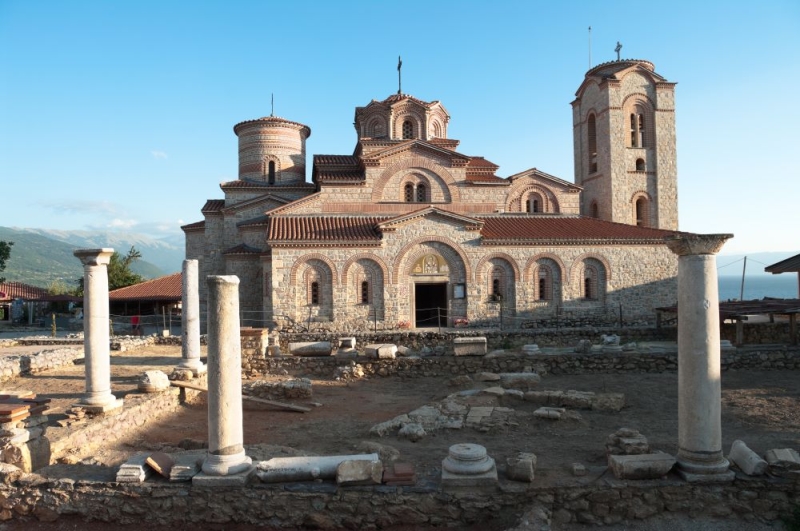
Pelister National Park
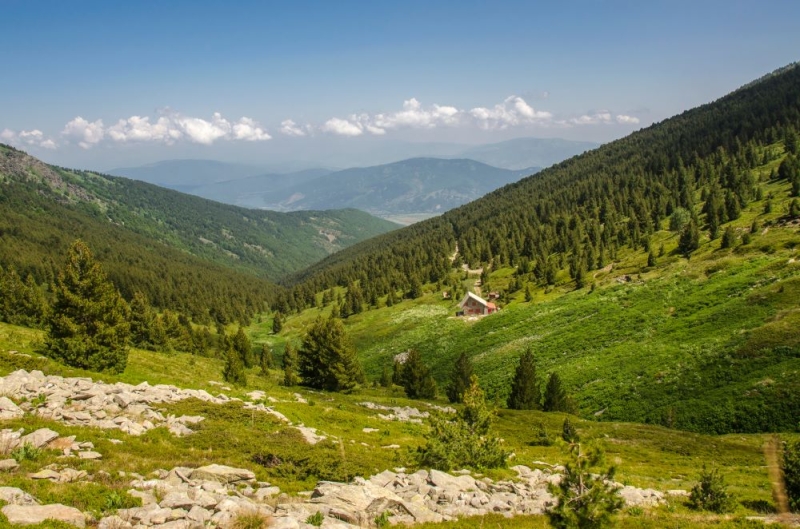
We spent the next half day in Pelister National Park 80 km from Ohrid. You can get there by rented car or by bus.
The park is famous for its crystal clear mountain lakes, the most famous of which are the Big and Small lakes. To reach the highest point – Pelister Peak you will have to climb more 2.6 km. In addition, among the attractions, noteworthy are the stone rivers, Jorgov stone and the Molika coniferous forest, which is famous for its unusual pine trees with five-pointed needles.
More than five hiking routes pass through the park; you can find them on the guidebook at the entrance. And in winter, Pelister welcomes numerous ski lovers. Overall, the national The park leaves a pleasant impression, as it provides everything for a comfortable stay for tourists. There are hotels, cafes and restaurants here. You can move along the paths of the park not only on foot, but also by bicycle – rent one right on the territory of the park.
This type of vacation was an excellent end to our three-day trip to North Macedonia.
*Prices valid at time of publication
Photo: shutterstock.com
You can book hotels online on the website or in the OneTwoTrip app.

